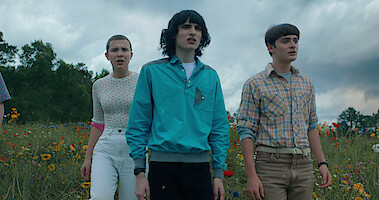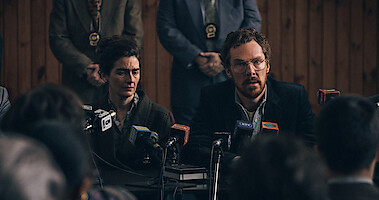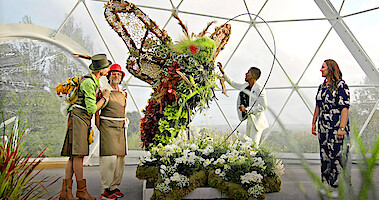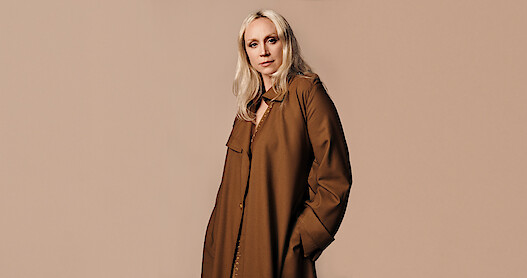
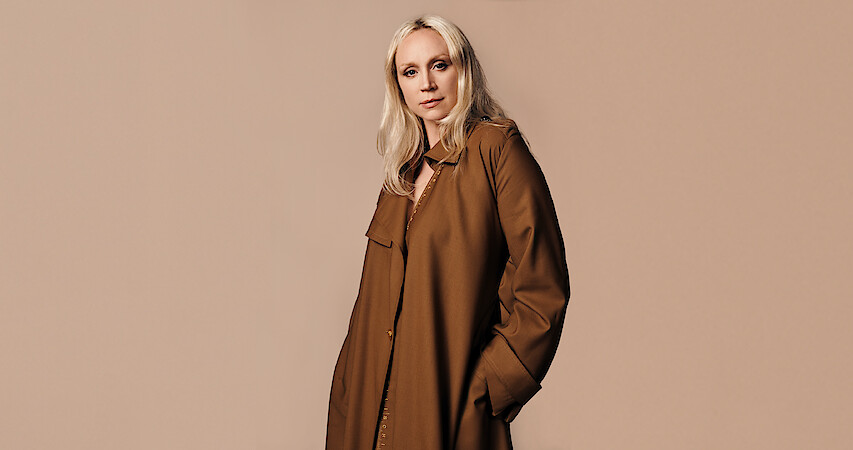




What makes a great Satan?
When it comes to the best Beelzebubs on-screen, we’ve seen the greats take on the Lord of Evil: Al Pacino’s pervy lawyer in The Devil’s Advocate, Tim Curry’s super-horny (like, those horns are notoriously B.I.G.) large, red Legend daddy and, of course, Jack Nicholson’s open-kimonoed yuppie sleaze in The Witches of Eastwick. There’s a pattern here: oversexed machismo; the devil as the unbridled Id of hyperdrive, hetero-male desire. There’s not enough Purell in the world to sanitize your eyes after watching these mouth-breathing monsters.
But Gwendoline Christie’s radical take on Lucifer in Neil Gaiman’s The Sandman charts a new course.
“The devil arrives in a limousine,” Christie tells Tudum.

Christie’s charming Lucifer exudes the air of a true fallen angel — confident, calm and quick-witted, but withholding a tsunami of terror as the queen of demons. In Gaiman’s comics, Lucifer dons an ivory power-suit and has an '80s haircut that would make Tammy Faye Bakker blush. Christie’s vibe is high fashion, created in collaboration with her partner, Giles Deacon. She’s a statuesque Satan who could command a Rick Owens runway as easily as The Sandman’s cold depths of Hell. Her character is a departure from the emotional and physical powerhouse of her Brienne of Tarth in Game of Thrones and her irritable, heavily armored Captain Phasma in J.J. Abrams and Rian Johnson’s Star Wars. Christie says her inspiration for Lucifer came from “treachery with a smile on its face.”
Tudum recently caught up with Christie to talk about her sly Satan, Margaret Thatcher’s influence on the character and how George R.R. Martin and Star Wars changed her life.

How did you first become interested in Neil Gaiman and The Sandman?
It’s a funny thing when there’s repetition in your life; you have to pay attention to it. And I’d say, over the last 20 years, people have said to me from time to time, “You must read The Sandman. It’s so up your street, it’s everything that you love.” And it was in my mind, but I never acted on it. And then my wonderful friend, [fashion journalist] Tim Blanks, who’s got the most extraordinary mind and exquisite taste, said, “There’s a book you have to read. It’s like it’s written for you. It’s called The Ocean at the End of the Lane, and you will absolutely love it.” I read it, and Neil’s voice was so beautiful and full and delicate.
So when Allan Heinberg and Neil contacted me about me being involved in Sandman, it was pretty much an automatic yes. I was so unbelievably lucky to be in Game of Thrones for almost a decade and to play a character that I loved so much. However, I really wanted a challenge. And I also wanted to continue to work with people where it felt like a collaboration. And I felt that there was unity and we were all working together, and that’s satisfying to me.
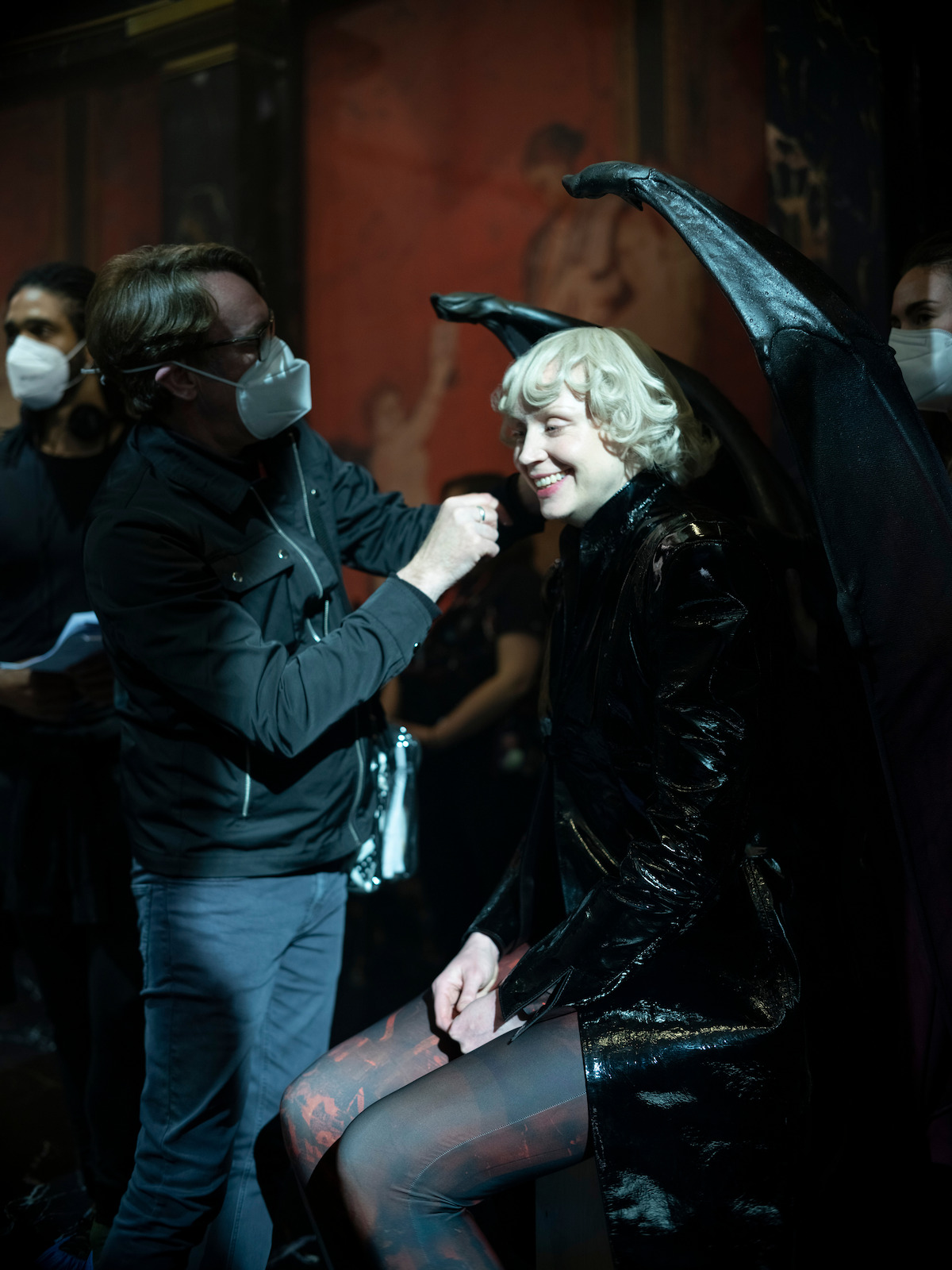
Who are some of your favorite Lucifers on-screen?
It’s not even something that I’m aware of. It’s something that I chose to avoid. The things that I looked at were that Neil said his first inspiration for this particular Lucifer was from [19th-century French artist Gustave] Doré etchings, and I was familiar with those. And, obviously, the young David Bowie from that folk album, which I know very well. And this idea of Lucifer being a junkie angel, that was directly inspired by David Bowie.
But the beauty was that they made a very empowering gesture. They said, “We want to know what your conception of the role is. We want to know what your portrayal is.” And they were incredibly generous. They said, “What’s the point of hiring you if it isn’t your version?” And I thought that was really beautiful because it gave me huge confidence.
How did that shape your performance?
I looked at what had first inspired Neil, and I thought about those classical depictions of Lucifer. I played Lucifer before onstage in Doctor Faustus, and I was thrown out of the gods of the theater, painted gray with a bald cap on, wearing chain mail and tumbling out of the sky doing turns with my hands on fire. I thought about what it meant, hoping that somehow I might have the opportunity to do it better, to connect to it in a different way.
In terms of pop cultural references, I was aware of things that had been around, but I wanted to really think about what evil was in a real sense. It seemed to me that it was about absence and a lack of empathy, disconnection, isolation and total bitterness. Living entirely without hope.
Living without empathy, that’s the core of evil. That’s so powerful and really comes through in the performance.
Aging is [also] a glorious thing, because with it comes experience and also comes myriad disappointments that you can tap into for a character like Lucifer, who was God’s favorite and is cast out down to hell and has to live without hope. It was fascinating to me.
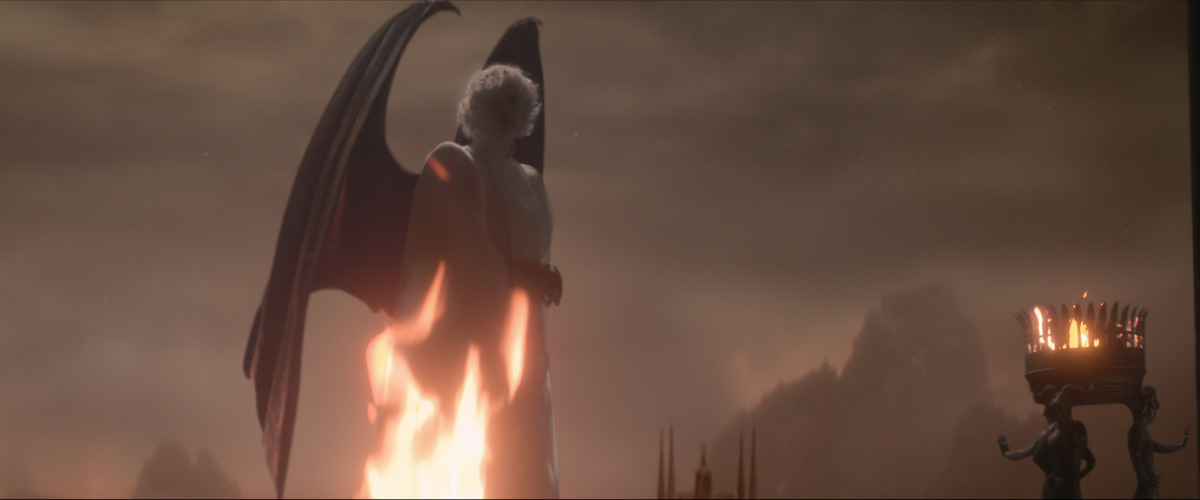
How was this role different from what you were doing in Game of Thrones?
I was so unbelievably lucky. Genuinely, I kind of can’t quite believe that I’ve been lucky enough to be involved, because those things have been dreamed. It was a dream of mine to play a role like Brienne of Tarth, because of the experience I was having: I’m a tall woman, and I can have quite an outgoing personality. The idea of traditional concepts of femininity being about containment and being minimized was something I always wanted to challenge and also explore the experience of an acute vulnerability, but with a very physically strong outer. And that was an incredible role because I had to really work on physicality. That wasn’t something that was necessarily natural to me. I’d always been very feminized in a traditional way.
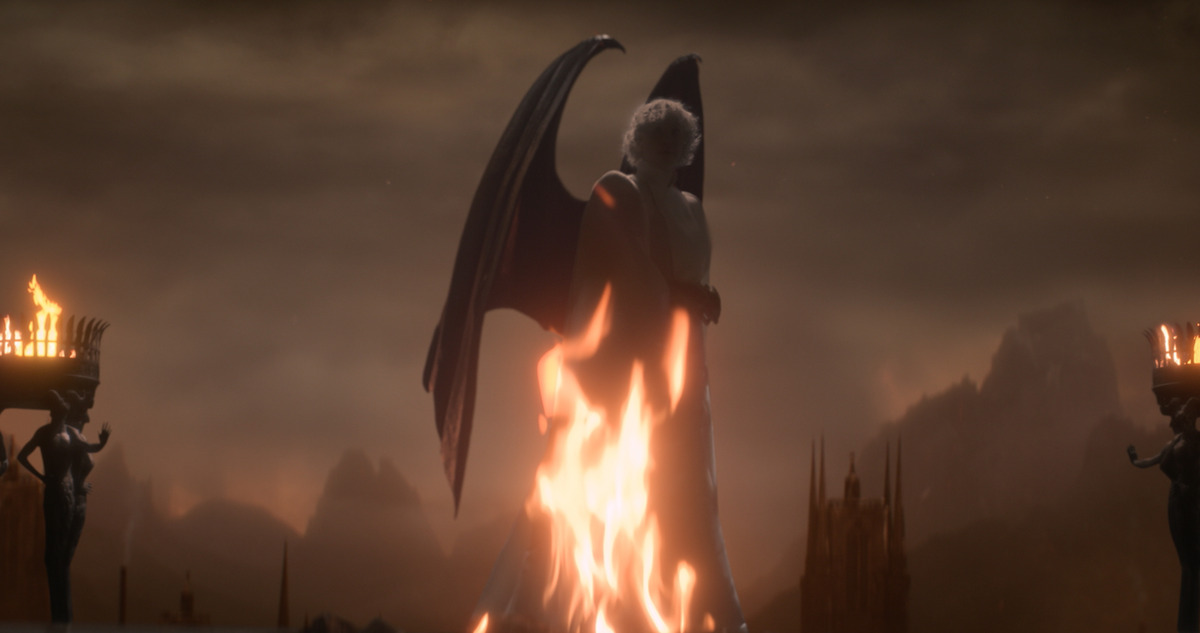
So having to reveal those parts of myself, which made me intensely insecure about my own strength, my size, my androgyny, having to take my hair away and as part of a role, be ridiculed for the way that I look and the way I fit into the world. It was a huge challenge, but I felt it was necessary for me as a performer to go through that. I felt like that was an evolutionary step. It was also so glorious that George R.R. Martin and Dan Weiss and David Benioff decided to create a character that was so fully formed, was three-dimensional. Brienne of Tarth was a three-dimensional character. As George R.R. Martin always said when asked how do you create these feminist characters? And he would say, “Well, I’ve always thought about women as people.” And so that was an amazing opportunity.

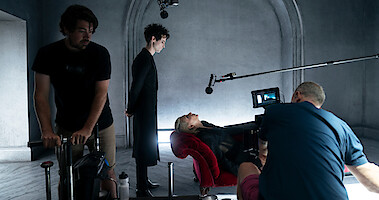
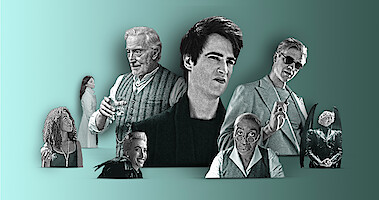

What did you learn from your experience in Star Wars?
I first saw Star Wars, I think I was 6 years old, and it had... It makes me emotional talking about it. It’s ridiculous, but it was like a wish. It was like a dream. It felt like a world I could live in feeling so removed from the world and feeling like there wasn’t really a place for me. There was this extraordinary entirely nonreligious spirituality at its heart. And J.J. Abrams was so wonderful. I loved working with everyone. They make me feel so welcome. Carrie Fisher, who was glorious, and Mark Hamill, who’s sensational. And of course, Harrison Ford, who’s the most incredible actor and extraordinary presence. And working with John Boyega and Daisy [Ridley] and Adam Driver and Laura Dern.
It was a dream come true. But again, the reason it was a dream come true was that this was a subversion. This was a transgressive woman. This was a woman who was disconnected from that traditional female depiction of mother, nurturing, kindness. This was entirely the opposite of that. And also, badass. It’s thrilling to be involved in these things when they’re a subversion.

What other inspirations did you have for the role?
I also went to the Museum of Witchcraft and Magic, which is a tiny museum run by great friends of mine in Cornwall. They have a spectacular and very esoteric collection of items relating to the occult and to Lucifer, and an extraordinary library. I spent a few days in there researching, chatting with them, and what came through was this idea of charm. There’s only so much I can get from an image or a reference. Ultimately, it has to be about what inspires me, and chatting with my glorious friends who run that museum about Lucifer was actually very lighthearted and charming. And so it started to occur to me that, actually, the devil doesn’t arrive protesting and trying to fight. The devil arrives in a limousine.
And I also thought about that phrase “treachery with a smile on its face” that Margaret Thatcher uttered when she was removed unceremoniously from office. And so, I suppose there were more arbitrary concepts, actually. It was more about what it inspired in me and what that meant and what was coming through. I wanted to portray Lucifer with something that I’m not particularly good at, which is stillness, because I think that’s truly about absence.
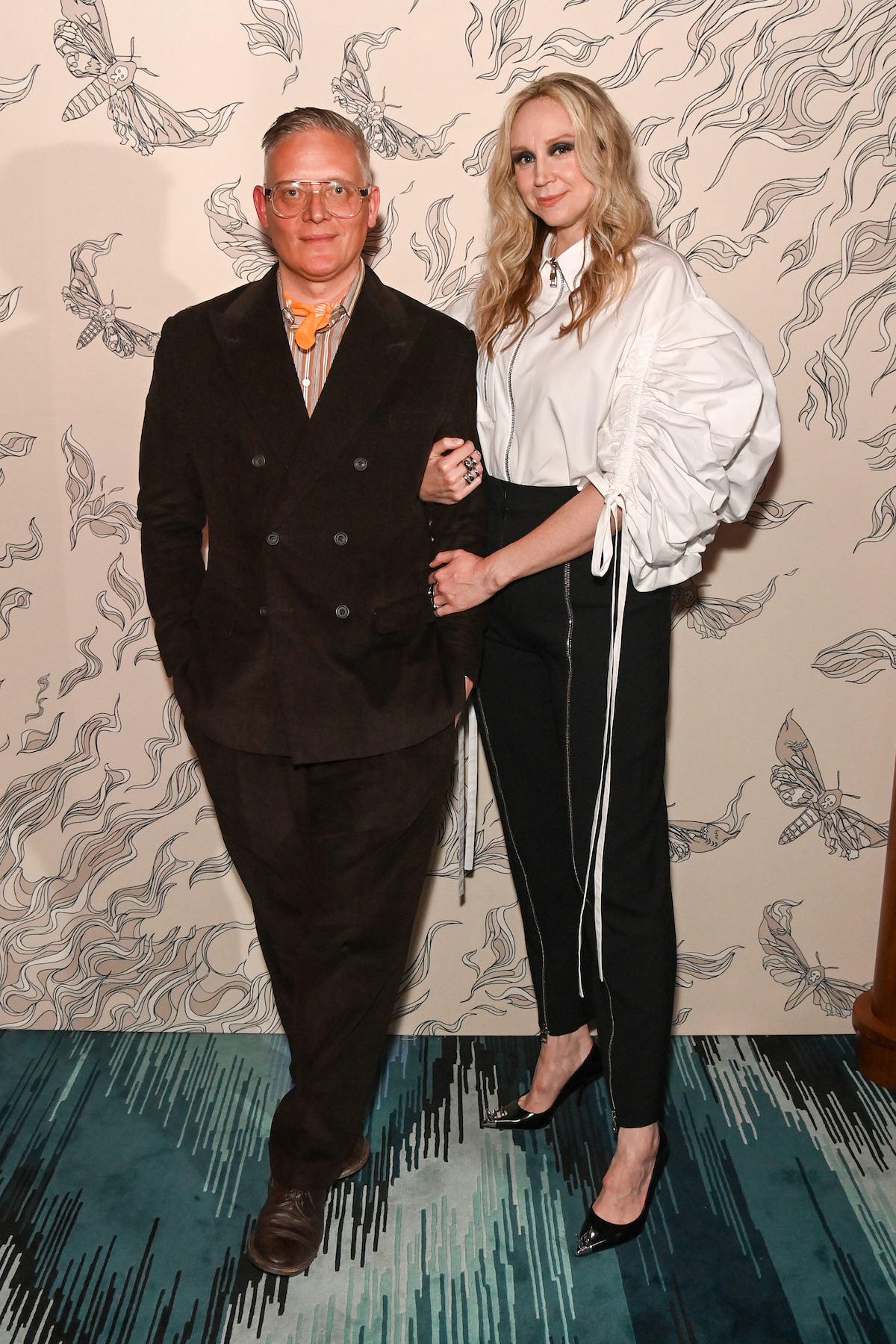
How was the style of Lucifer created for you?
Because of my personal enjoyment of the flamboyant when it comes to sartorial matters, Allan and Neil wanted to inject that into the character. To be honest, I think Allan sensed my frustration and desire to be fabulous on-screen. So he asked my partner, Giles Deacon, who’s a long-celebrated fashion designer, if he would be interested in designing my costumes. And that was bliss for me.
Giles was so excited to be involved. He loved the character. He loved the comics. He loved Neil’s work. And the idea of us all doing this together was thrilling. Also, he said he really wanted to help me look incredible as this part, to translate his years of experience as a designer. He’s worked for such a wide range of people to create something that had all of the magisterial qualities that we felt that Lucifer deserved, but encompassed the androgyny. For it to be roguelike but manipulated and have grandeur to it and maintain shape and give it an extraordinary silhouette and to really work with the wings. But also, it was an interpretation of what’s in the comics, absolutely.
And that’s what we were all really fixed on.
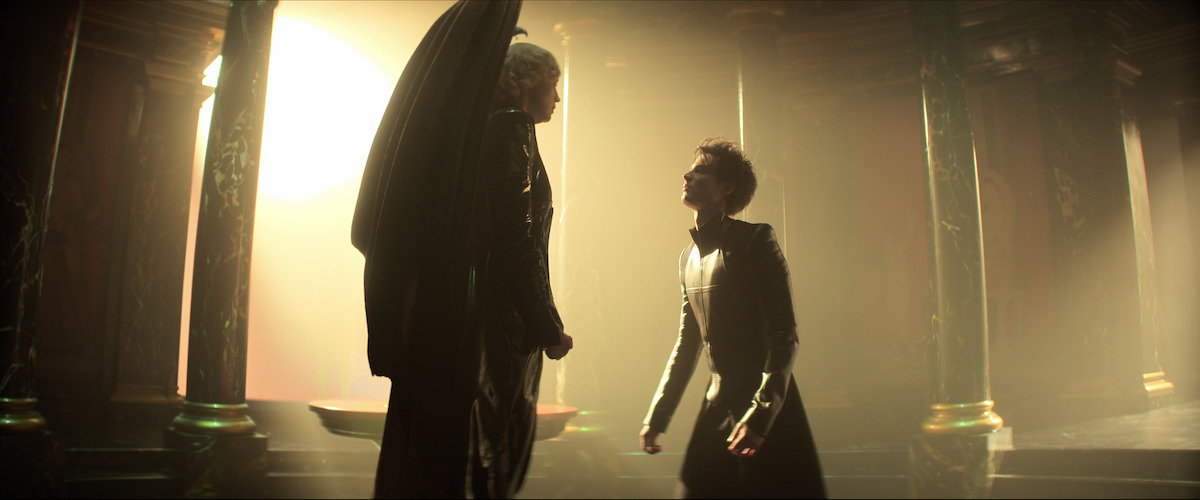
Having spoken with Neil and Allan and Jamie Childs, our director, and Sarah Arthur, our wonderful costume designer, and Graham, our wonderful hair and makeup designer, we knew we wanted to stay so close to the comics, but with a translation of them. And then we also knew that for their battle, which I was so thrilled to change from the comics. That’s what Neil wanted, to transform [it] into something more brutal and wiped clean.

